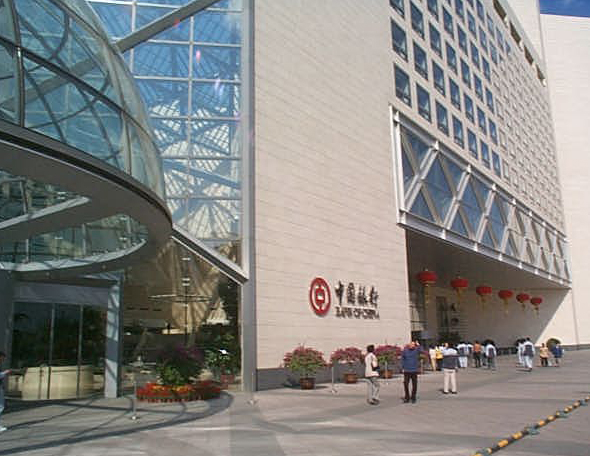We are now one of the largest employers of technology resources in the country
Good morning, everyone and what a pleasure it is to be back at FST Media in-person.
My name is Ana Cammaroto and I’m the CIO for Personal Banking & Digital at NAB. Fresh out of Uni, as an engineering graduate I signed up to the Institute of Electrical and Electronics Engineers – admittedly for its glossy technical publications – but mostly because its purpose resonated “to foster technological innovation and excellence for the benefit of humanity.”
As any engineer will tell you…problem solving particularly hard problems and being able to share stories, experiences, and solutions on how we’ve solved the initially unsolvable…it’s simply part of our makeup. So today I’m going to do just that – share some examples with you about how our focus on Exceptional, Expert Engineering is helping us build the foundations to overcome complex issues for our customers.
However, I also want to cover the dilemma that is unfolding in our profession. It’s never been a better time to be an engineer – particularly software – in this country and many others around the world. High demand for skills. Rising wages. True choice of employer.
So why is it then that we are STILL failing to home-grow and attract younger people – and young women – into our field? Why is that over the last 7 years we’ve barely moved the dial on gender diversity? And why is it that, as an INDUSTRY, we aren’t doing more to solve this problem together.
But I’m getting ahead of myself. I should really start at the start.
I do of course, like some of you I’m sure, work for a Big 4 bank.
For me it’s NAB – where our organisational roots stretch back over 170 years – and with around 8 million valued customers across segments of Personal, Business and Corporate Institutional banking.
I’ve spent over three quarters of my engineering career in the world of Financial Services and it’s a pursuit that I believe in. Helping our customers achieve their financial goals, helping our communities and businesses thrive and helping my colleagues grow and develop a meaningful career – it’s work that I find PURPOSEFUL – and work that has IMPACT. NAB has been talking about ‘more than money’ for some time and – I think it neatly sums up the impact and role that financial services has in our lives.
Of course, technology has always been fundamental to our industry – from Adding machines to Machine Learning – and in many cases the fortune of the organisation rested on the ability to provide an efficient, technology enabled experience.
But rewinding the clock back four or five years ago at NAB it was fair to say that those fortunes weren’t at their peak.
Like many of our peers we were riddled with nothing but legacy, were over reliant on vendors and had become burdened with the ever-increasing cost of maintaining a complex environment. I’ll borrow a phrase from one of my colleagues Steve Day who recently reflected on this as being akin to ‘freezing our operations in time’ – which in practice meant that we were still operating like a 90s company in a world being redefined by exponential technologies.
We decided back then that we didn’t want the future fortunes of NAB to hinge on technology foundations that would actively hinder innovation. Instead, we wanted to build technology, digital and data foundations that would allow us to re-imagine how we provide banking. Now don’t get me wrong – we still have legacy systems that we want to modernise – but we also have the foundations to move forwards. So how did we get there?
We started with some fundamental decisions – and the first one was to go big on public cloud. Which we did using a basic formula.
Multi-cloud + Standards + Compliance = Flexibility to innovate
Where Multi-cloud wouldn’t tie our success to one provider
Where standards would create universal consistency in how we migrate (and run)
Where compliance efforts would shift from hardware to software
Sounds easy?
What came next was four years of continuous migration underpinned by a new resourcing philosophy of insourcing – sometimes known as ‘Build, not buy’. Instead of outsourcing the migration we home grew this capability from within – and in many cases by reskilling the existing technology teams and having them migrate their own assets. We did this by creating a ‘Cloud Guild’ – which since inception has helped over 7000 NAB colleagues gain industry recognised cloud skills.
This investment in our people helped us both home-grow the workforce we needed and attract others to come work with us based on the knowledge that 1) this was indeed interesting, resume-worthy work 2) they could retrain while getting paid to do so.
So, where we are we today? We are now one of the largest employers of technology resources in the country. We’ve migrated over 66 per cent of our application base to the public cloud and we’re still going hard at it – we’re on track to hit 80 per cent sometime in 2023. But underpinning it all is our NAB Engineering Foundation – a server-less, standard development platform that integrates standard tooling from the world’s best software vendors. Through a philosophy of ‘inner sourcing’ – where we are continuously reusing universal capabilities – the platform automatically inherits more features and protection the more it is used.
And this is the bit where it gets interesting.
With most of our apps in cloud – run by a home-grown engineering workforce using standard tooling and common development platforms – we were then presented with an unfamiliar scenario. The traditional blockers had melted away – which meant it was time to take advantage of innovation opportunities.
Backed by our ‘Domain’ delivery model – where tight squads obsess about customers or colleagues (the What and Why they do) as well as their engineering (the How they do) – we’re now working on ambitious programs that were simply unimaginable just a few short years ago. And we are getting better and faster every day.
So let me talk about two very quickly.
The first is our ongoing ‘Simple Home Loans’ implementation in the Personal Bank. The race to ‘time to yes’ has been running in the industry for some time now as our customers – and rightly so – took a good hard look at their frustrating and lengthy home lending experience and said, ‘That is not good enough!’
But five years ago, if you wanted to implement a mortgage origination and servicing platform that actually met customer expectations…you didn’t have a lot of options. Chances are you’d be boarding a plane to America to part with (a very big) chunk of shareholder money to build and integrate an all-singing, all-dancing monolith. One that would ultimately come with much of the same future baggage and expense of the asset it would replace.
With the NAB engineering foundation established we could see a different path. So we tasked our home ownership engineers with a question – ‘How could we home-grow a originations solution that could deliver customers an unconditional approval (with documents in their inbox for digital signature!) in less than an hour.’
The answer? A cloud native, digital engine that converges the home lending ecosystem into a single reusable process. What was previously unimaginable was now not only a possibility – but a reality.
In production today we have a Simple Home Loan solution that leverages micro-services and our digital platform with loosely coupled backend services. As a result, we have been able to dramatically improve the banker, broker, and customer experience.
Just a few weeks ago one of our brokers reported a particularly happy customer that – upon completion of the loan application – had full, unconditional approval in less than twenty minutes with digital documents ready to sign in their inbox.
But that’s just one small example.
35 per cent of our eligible home lending customers – that’s ALL, not just the simple use cases – are getting an unconditional ‘time to yes’ in less than an hour. 50 per cent are getting that same approval in under 24 hours. It’s an experience, that like I said, was unimaginable just a few years ago.
Best of all, we’ve been able to deliver it in a fraction of the time it would take to release these features by doing things the old way – meaning more customers have been able to access a simpler home loans experience sooner.
The other example – and I realise I’m picking on monoliths here – is our NAB Connect Business Banking Digital Platform. Prior to migrating this critical and monolithic application to cloud, our track record on availability left much to be desired.
Following the migration to cloud two years ago we’ve had almost ‘four nines’ of continuous availability. It wasn’t just a step change – it was a whole new world.
But while we were now finally underpinned by reliable infrastructure – we still had the pressing matter of an aging digital platform.
So again, we threw the challenge out to our engineers – how could we better leverage our existing services and deliver more regular customer features?
The answer? Mini-Apps.
Basically, a micro-frontend and microservice based, flexible architecture that can help us decompose monolithic applications one component at a time. By replacing common features of applications – for example sign on screens – with mini-apps we’re able to build these once and reuse them across multiple platforms.
In the context of NAB Connect we’ve been able to leverage both existing and build new mini-apps that can help improve the customer experience – while at the same time reducing complexity in our own environment. Our engineers are literally pulling the monolithic wall apart one brick at time and delivering a steady stream of customer enhancements. And it probably won’t surprise you to learn – they’re having way more fun doing it.
The common thread between these two implementations is that they have been HOMEGROWN and ENGINEERING LED. We’ve got the PLATFORM. We’ve got the PROCESS. And we’ve got the PEOPLE. And that’s why we think we’re onto something exceptional.
Which I guess brings me to what’s next.
Insourcing and home-growing key technology and engineering capabilities have been critical to our realising our ambition of building the best engineering bank. I mentioned earlier our comprehensive retraining programs run through the cloud guild, but since 2019 we have hired over 4300 technologists, doubled our technology intern program to over 500 and partnered with universities to set up new talent pipelines.
We’ve also started our highly successful Return to Work program – which in its first three months helped 40 people re-enter the workforce after extended periods away. 70 per cent of these were Mums coming back to work – sometimes after 10 years out of it – and you guessed it – they’re back as project analysts, software engineers, architects, and technical analysts.
But it’s proving to not be enough – with record numbers of vacancies and competition for technology talent at an all-time high, we’re still forced to look globally to meet demand.
In 2019 we setup an Innovation Centre in Vietnam as well as recently establishing a more permanent presence in India. Since 2018, we’ve moved from a workforce that was 70 per cent outsourced to 39 per cent at the end of last year. We want more engineers wearing NAB colours and continuously building our IP – which is why we will continue pursuing insourcing for the foreseeable future.
But while building our global workforce capabilities is key in helping us meet the demands of today it still leaves us with a burning question – how will we be able to meet the demands of tomorrow?
There’s the oft-quoted phrase from Marc Andreessen that ‘Software Will Eat the World’. Ten years on from that prediction I believe that software has just finished its entrée – the future of our economy, the industry and engineering-at-large – it lies in code.
I said before that in Australia there’s never been a better time to be an engineer. However, the same can’t be said for companies looking to hire them. I’ve no doubt that being able to find enough technical resources would be a top 3 challenge for every single leader in this room.
You could argue that the current skills shortage is one borne from circumstance – pandemic recovery, economic conditions, travel restrictions. And while these are certainly factors, those of us that have been around long enough have seen this coming for over 10 years.
Declining numbers of IT graduates – less than 7000 in 2019. A burning need to modernise our school curriculum – in NSW year 7 to 10 are using 20-year-old lessons. Limited opportunities for young women – the ICT industry STILL has less than 30 per cent female participation.
These are the trends that, to date and despite the many efforts of individual companies, we have been unable to arrest. Worse still, the pandemic seems to have sucked the air out of many of these efforts.
So how do we put that air back in?
I want to leave you all with a thought today.
Exceptional engineering cultures don’t exist on technology alone. It’s great people with the desire to do something PURPOSEFUL that create great outcomes – maybe even sometimes for “the benefit of humanity”.
So, whether you know it or not. Whether you’re working for a multi-national or a start-up. Whether you’re a leader or just starting your career. You need to understand that you are a custodian of technology and engineering culture in this country.
It’s no longer enough just to pass on the knowledge to the next generation. We need to be doing more TOGETHER – as an industry – to not just fight each other for talent – but to look REALLY HARD at the factors that have landed us here – and do something about it.
If – as the Tech Council of Australia predicts – Australia needs more than a million technology workers by 2025, how do we double the number of IT graduates in the next three years?
How do we support educational institutions with creating more relevant and modern content?
And how do we inspire a new crop of young women to not only be STEM skilled, but confident enough to take on a career where over two-thirds of your colleagues will be men. A career where you might be trolled on social media for having a technical view based on your gender or for encouraging girls to study Maths.
Where throughout your career you will encounter bias both conscious and unconscious.
On the point of gender balance, I’m not here to tell you that I have all the answers.
What I can tell you is that after twenty years of campaigning for more women in technology, we’re not going to solve it by creating a sidebar pillar for diversity. It must be integrated from top to bottom. Inclusion gives everyone the opportunity to be their best selves – it’s can’t just be about ‘putting more women in the photo’.
We need to plant the seeds now if we’re to home-grow our future. Because if we don’t, there might not be a next generation of engineers for us to pass our knowledge on to.
Tags: AustraliaengineeringNAB





